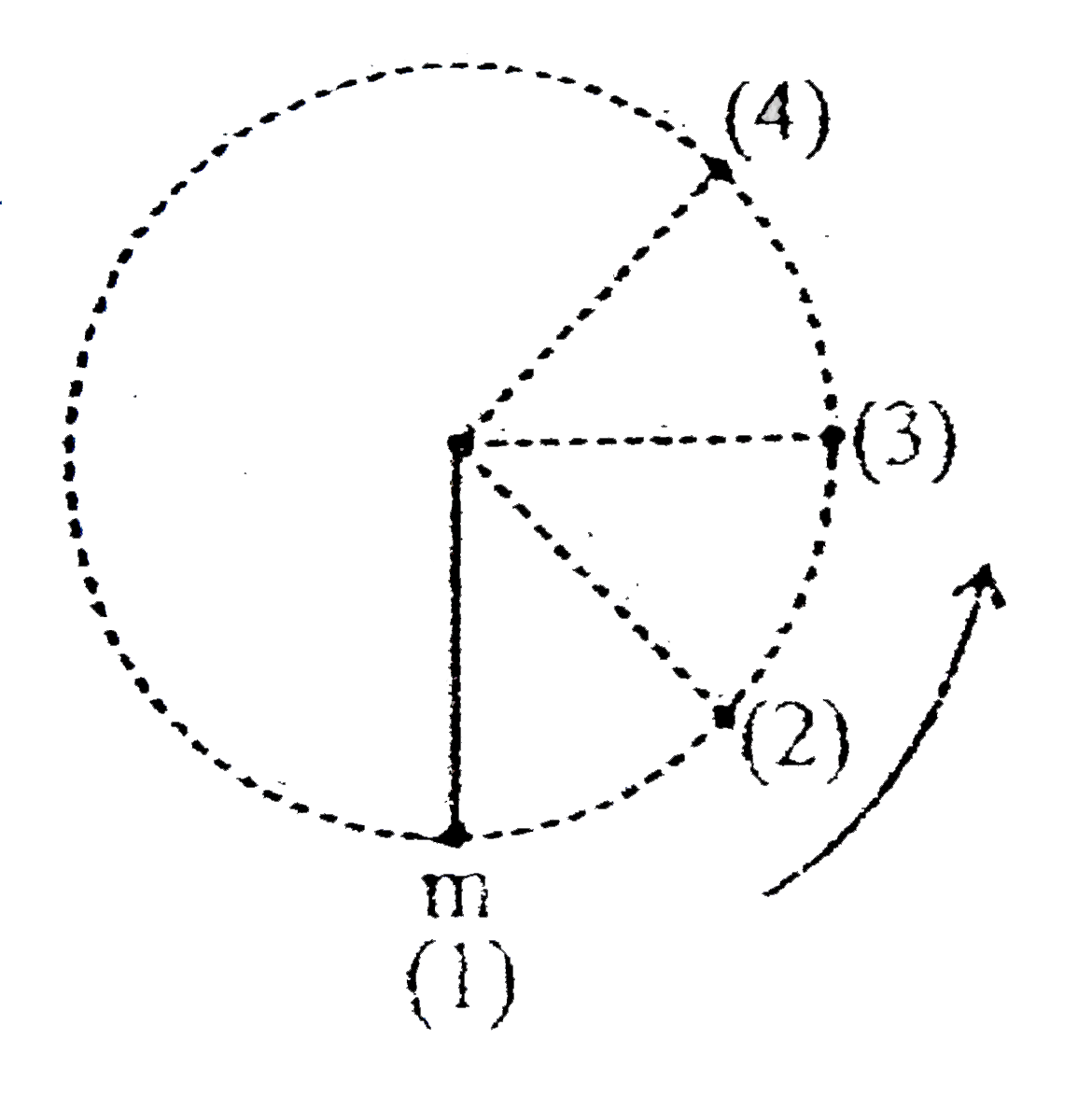Derive an expression for the difference in tensions at the highest and lowest points for a particle performing vertical circular motion.
Text Solution
Consider a small body ( or particle) of mass m tied to a string and revolved in a vertical circle of radius r at a place where the accerleration due to graviy is g. At every instant of its motion, the body is acted upon by two forces, namely, its weight −→mg and the tension →T in the string.

let v2 be the speed of body and T2 be the tension in the string at the lowest point B . We take the reference level for zero potential energy to be the bottom of the circle. THen, the body has only kinetic energy 12mv22 at the lowest point.
∴T2=mv22r+mg ...(1)
and the total energy at the bottom =KE+PE=12mv22+0
=12mv22 ...(2)
Let v1 be the speed and T1 the tension in the string at the highest point A. As the body goes from B to A, it rises through a height h = 2r.
∴T1=mv21r−mg ...(3)
and the total energy at A = KE + PE
=12mv21+mg(2r) ...(4)
Thus, from Eqs. (1) and (3),
T2−T1=mv22r+mg−(mv21r−mg)
=mr(v22−v21)+2mg ...(5)
Assuming that the total energy of the body is conserved, the totl energy at the bottom = total energy at the top
Then, from Eqs. (2) and (4),
12mv22=12mv21+mg(2r)
∴v22−v21=4gr ...(6)
Substituting this in Eq. (5),
T2−T1=mr(4gr)+2mg
=4mg+2mg
= 6 mg
Therefore, the difference in the tensions in the string at the highest and the lowest points in 6 times the weight of the body.
|
Topper's Solved these Questions
- DERIVATIONS-IBOOK - NAVNEET PUBLICATION - MAHARASHTRA BOARDCHAPTER - DERIVATIONS-IEXERCISE - Gravitation
7 Videos
- DERIVATIONS-IBOOK - NAVNEET PUBLICATION - MAHARASHTRA BOARDCHAPTER - DERIVATIONS-IEXERCISE - Rotational Motion
13 Videos
- DEFINITIONSBOOK - NAVNEET PUBLICATION - MAHARASHTRA BOARDCHAPTER - DEFINITIONSEXERCISE - COMMUNICATION SYSTEMS
3 Videos
- DERIVATIONS-IIBOOK - NAVNEET PUBLICATION - MAHARASHTRA BOARDCHAPTER - DERIVATIONS-IIEXERCISE - Assignments
9 Videos
Similar Questions
Knowledge Check
A particle performing uniform circular motion has
Aradial velocity and radial accelerationBradial velocity and transverse accelerationCtransverse velocity and radial accelerationDtransverse velocity and transverse accelerationA particle performing uniform circular motion has
ARadial velocity and radial accelerationBA radial velocity and transverse accelerationCTransverse velocity and radial accelerationDTransverse velocity and transverse accelerationA particle is performing uniforme circular motion, has constant
AvelocityBkinetic energyCmomentumDacceleration
The acceleration of a particle performing S.H.M. at mean position is
View SolutionA stone is tied to one end of a string and rotated in a vertical circle . What is the difference in tensions of the string at lowest and highest points of the vertical circle ?
View SolutionThe relation between linear speed v, angular speed ω and angular acceleration α in circular motion is
View SolutionA particle (bob) of mass 1 kg is performing vertical cicular motion. Then :

View SolutionThe difference in tensions in the string at lowest and highest points in the path of the particle of mass 'm' performing vertical circular motion is :
View Solution
